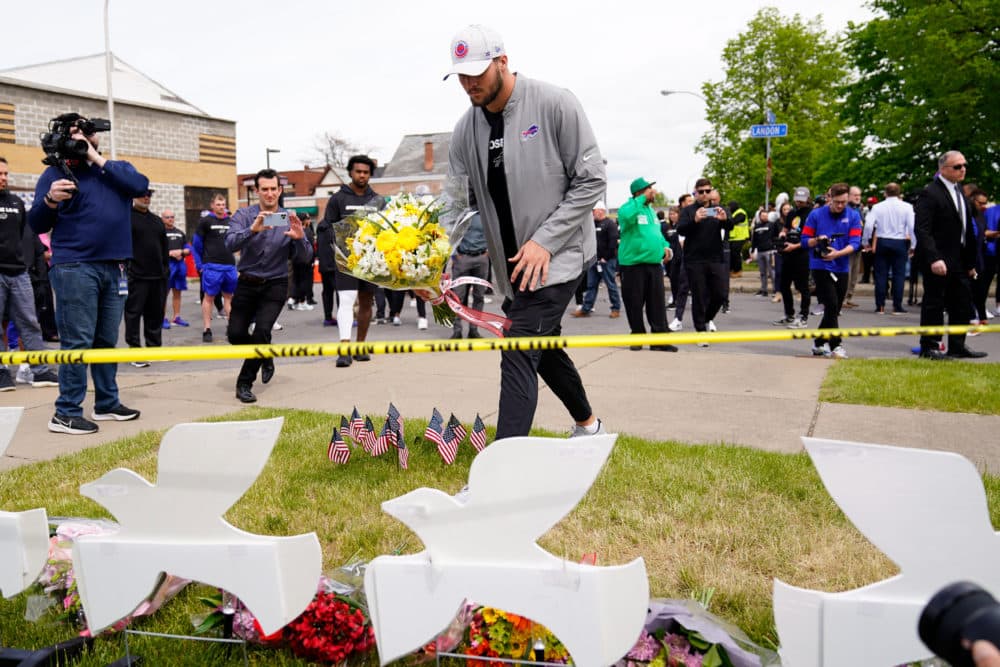Advertisement
Commentary
We can’t control guns or the internet. But we can watch kids for signs of extremism

We still don't know all the facts about why 18-year-old white male perpetrated a horrific hate crime at a supermarket in Buffalo, New York last Saturday. What appears irrefutable, however, is that his violent act was fueled by racist and xenophobic misinformation online.
As I discussed the shooting with my husband, an immigrant, person of color, fellow psychiatrist — and the bravest person I know — he spoke with uncharacteristic vulnerability: “I’m afraid.” Grappling with our fear and anger, we began a heated discussion about what should and can be done about digital extremism in a society that has become tragically passive about letting people of color fear for their lives on a daily basis.
In public health, primary prevention solutions are considered the most effective to avoid illness, because they eliminate the source of the hazard so no one is exposed. But what do you do when the illness is white supremacy woven into the framework of a nation?
Primary prevention requires government mobilization and national policies. Writer Eileen Rivers points out, for example, how this shooting highlights the need for national education reform that addresses America’s racist and violent past. But if white supremacist theories are becoming increasingly mainstream within the government, primary prevention measures seem infuriatingly improbable. (Although as I wrote this, Congress did — narrowly — pass a bill to fight domestic terrorism.)
[W]hat do you do when the illness is white supremacy woven into the framework of a nation?
We could try to crack down on extremist content online, but removing one problematic forum, like cutting off the head of the Hydra, spawns two new ones in its place. Case in point: TikTok is the latest platform caught in the never-ending pro-ana — promoting anorexia — problem.
Then there are gun control measures, but again, a lack of bipartisan support makes this fix repeatedly a non-starter.
We're left with a call for individuals to confront online extremism. Because young, white males make up the majority of those committing hate crimes in the name of white supremacy, the individuals who may be able to make the most difference are teachers, mental health professionals and especially, parents. As a child psychiatrist and researcher in problematic digital media use, I have some advice on what we (including myself!) might do better:
*Ask what your child/patient/student does online. Let me be clear: The internet does not cause someone to become racist or violent. But the ways social media platforms uniquely facilitate terrorist group recruitment are well-established. Fringe groups use the internet to lure in new recruits with support and camaraderie, all the while stoking in them a sense of moral outrage, feeding them misinformation, and convincing them that unless they commit to their cause, their very lives are at stake. (This is known as mortality salience.) A young person's devotion to a single forum or website should, at the very least, prompt additional questioning.
*Monitor closely for behavioral changes, especially now. Much like the internet, pandemics don’t cause violence or racism, but they may foster an environment where teens with racist views become radicalized. Troubled youth are especially easy targets for online extremist groups and the COVID-19 pandemic created troubled youth in droves. Grappling with sudden, dramatic shifts in their everyday lives, the teenagers of 2020 flocked to the one remaining source of consistent connection: the internet.
[A]nger is a feeling that extremist groups are masterful at taking advantage of online.
While teens increased their chances of encountering extremism as they spent more time online, the pandemic also slashed healthier opportunities for teenagers to build a sense of identity, community and self-esteem. No more hanging out with friends after school, football games or clubs.
The media may have focused predominantly on the rise in teen suicides during the pandemic, but teen anger has also exploded. I worked on an inpatient psychiatric unit during the early days of the pandemic and pediatric admissions for aggression were sometimes more frequent than those for depression. Unfortunately, anger is a feeling that extremist groups are masterful at taking advantage of online. These groups tell youth like the Buffalo shooter where to direct their anger:
“There isn’t a problem with you, but with Blacks, Hispanics and immigrants. You’re being replaced. It’s up to you to do something.”
*Watch for sudden changes in beliefs. While adolescence is normally a stage where teenagers “try on” new ideologies, if a teen suddenly starts espousing beliefs entirely inconsistent with previously held worldviews, it is time to investigate further. Los Angeles-based writer Joanna Schroeder described this well when she documented her own experience watching her sons' online behavior. “The red flags started going up for us when, a year or so ago, [our kids] started asking questions that felt like they came directly from alt-right talking points,” she said.
*If a teen is exploring online extremism sites, focus on maintaining an “in.” While your first instinct may be to forbid or admonish, the fastest way to lose access to a troubled teen is to shame them. Extremist forums make recruits feel empowered, and then work to isolate them from opposing (read: true) viewpoints. Adults must remain curious and invested, correct misinformation, and stay in it for the long haul. This is not to condone racist behaviors, but rather to watch for potential violence. Increase mental health supports when needed and provide alternative screen-free activities that offer connection and validation. Any suspicion of violent intent should be met with an emergent mental health evaluation.
It is critical now more than ever that white allies do all that they can to fight digital extremism. Even if our country is slow to make systematic changes to confront white nationalism, our Black, Hispanic and Asian neighbors deserve far more from us than passivity during these turbulent times. Diverting just one youth away from these forums could quite literally save Black and brown lives.
Correction: A previous version of this piece mischaracterized Joanna Schroeder's descriptions of her children's online activity.
